New Geological Perspectives on Graphite and Implications for Technology
February Program Presentation by M. Rebecca Stokes, USGS
Synopsis by Andy Thompson, MSDC Secretary, with thanks to Rebecca for her excellent editorial additions

Rebecca Stokes is a research scientist at the USGS where she conducts research in the broad field of energy materials characterization. Her current projects include graphite characterization for battery applications and the catalytic role of clays in natural hydrocarbon production. She received her Ph.D. in Geology from Indiana University (2012), and conducted post-doc work at MIT and research in private industry. She subsequently joined USGS.
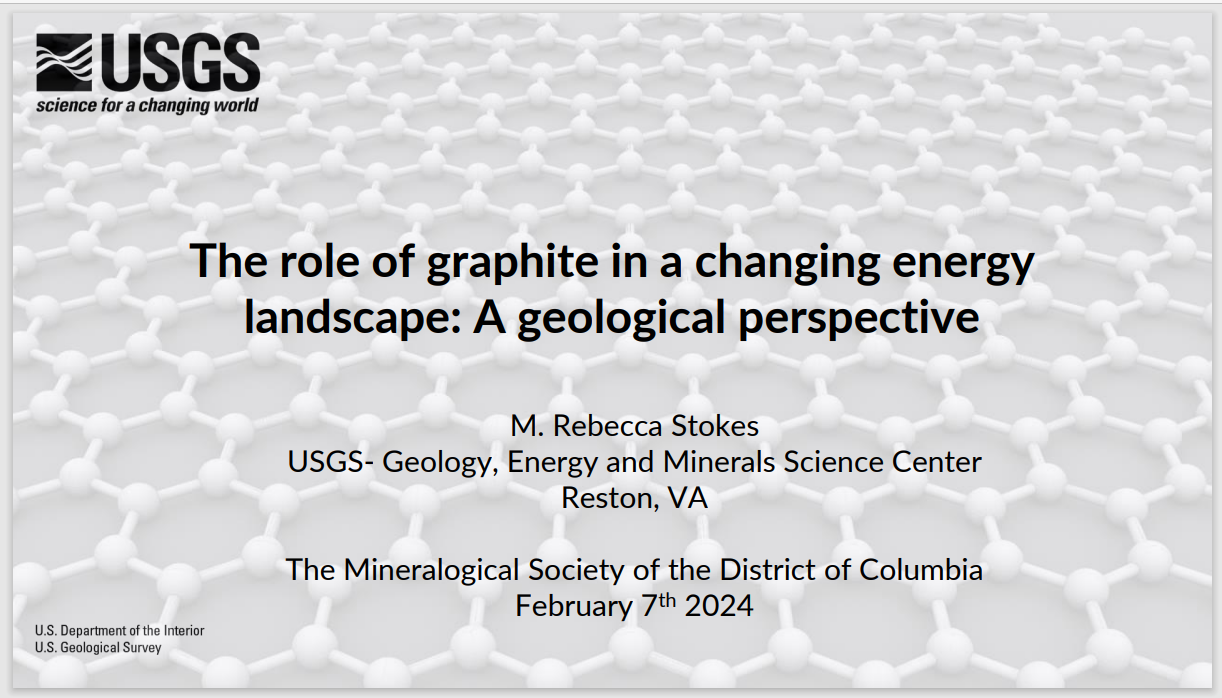
The purpose of this synopsis is to provide readers with selected highlights from her presentation. For a fuller understanding of her research and findings, it is best to consult her publications.
Rebecca introduced tonight’s topic by calling attention to graphite frequently being in today’s news because of the critical role it plays in battery production, especially for its use in electric vehicles (EVs).
She cited a survey recently reported in the Washington Post which found that most people (80%) did not know that China produces the vast majority of the world’s graphite. This dependence on a foreign nation has important implications for the U.S. economy and our nation’s efforts to transition to efficient, green forms of energy. So, for the U.S., graphite is a “critical” element.
As a research scientist at the USGS, Rebecca has been conducting geological research in this area of energy-related materials, especially graphite, its formation, and its diverse characteristics as it is found across the globe. In her presentation’s outline below, she provided her audience with an initial context for understanding graphite’s importance and roles in green energy by explaining two points:
1) the role graphite plays in lithium-ion batteries and how the different types of graphite can best be used; and,
2) where graphite is found and how its formation in those geological settings results in different types of graphite and how they can be used for greater energy applications.
Introduction to Graphite
Graphite, she said, is commonly found in our daily lives and plays a central role in today’s changing energy landscape as illustrated in the slide below.
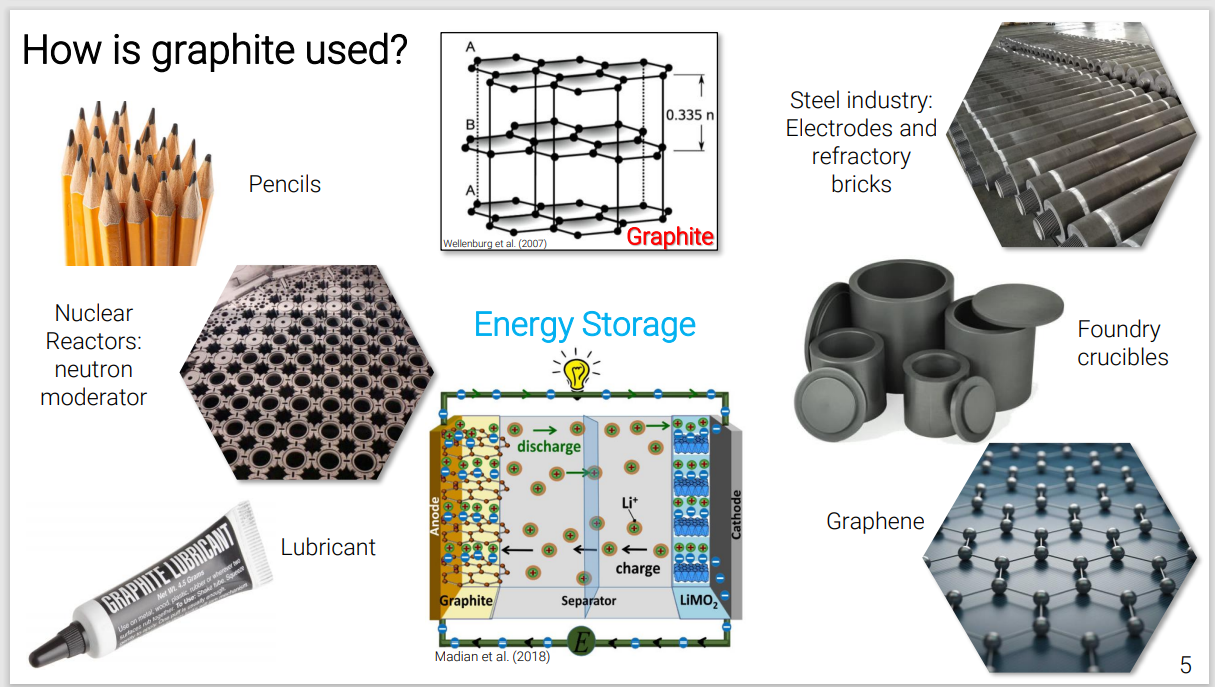
It plays a role in helping control the operation of nuclear reactors. “The reactor meltdown in Chernobyl (1968),’ she said, ‘happened when the graphite rods were removed.”
The physical and chemical characteristics of graphite, its six-sided carbon rings, its high temperature tolerance and high electrical conductivity, and its layered crystal structure pictured below, all give it a central role in supporting a more efficient transition to green energy.
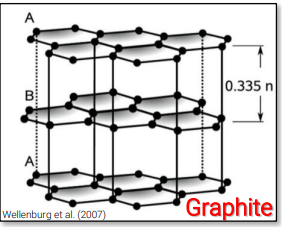
One question for the mining industry is: where do we find graphite, including the most valuable variety, vein graphite? As shown on the map below, the U.S. has no natural graphite production. The largest producer of vein graphite production is in Sri Lanka.
Lithium batteries are the power generating and storage component of electric cars. They contain about 8 kilograms of the element lithium. But about 70 kilograms of graphite are also needed for those batteries.
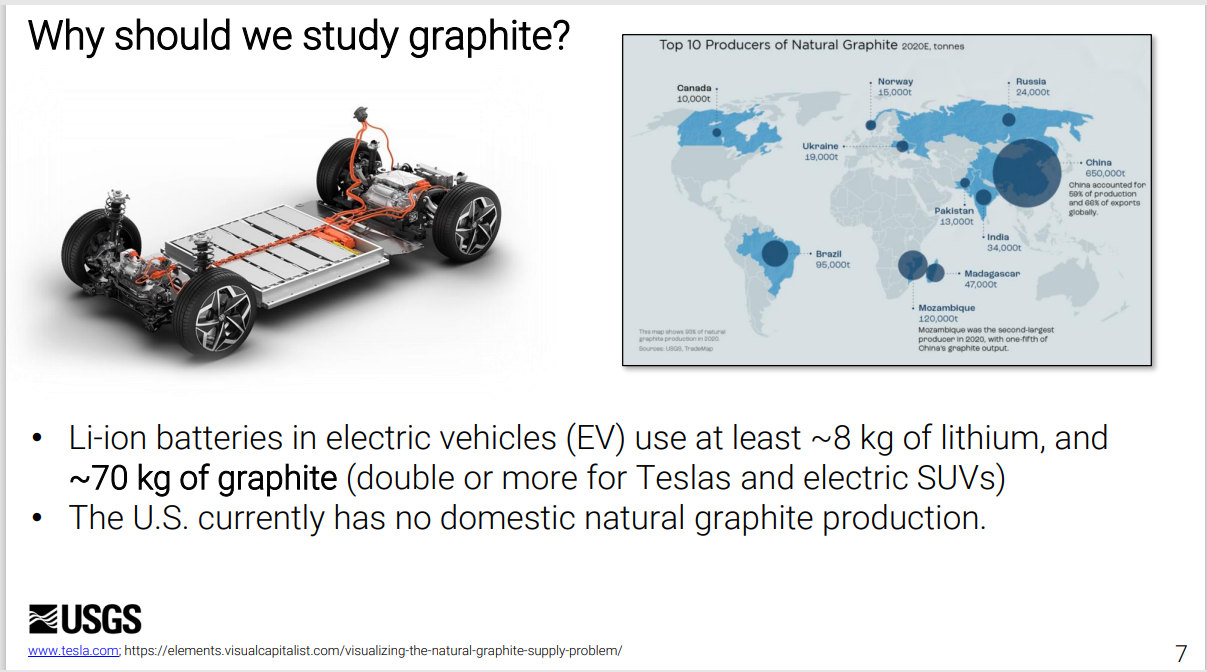
Rebecca’s slide below explains that it is the anode pole of the battery where graphite, its physical and chemical characteristics, along with its carefully controlled combination of trace elements, efficiently collects the electric charge.
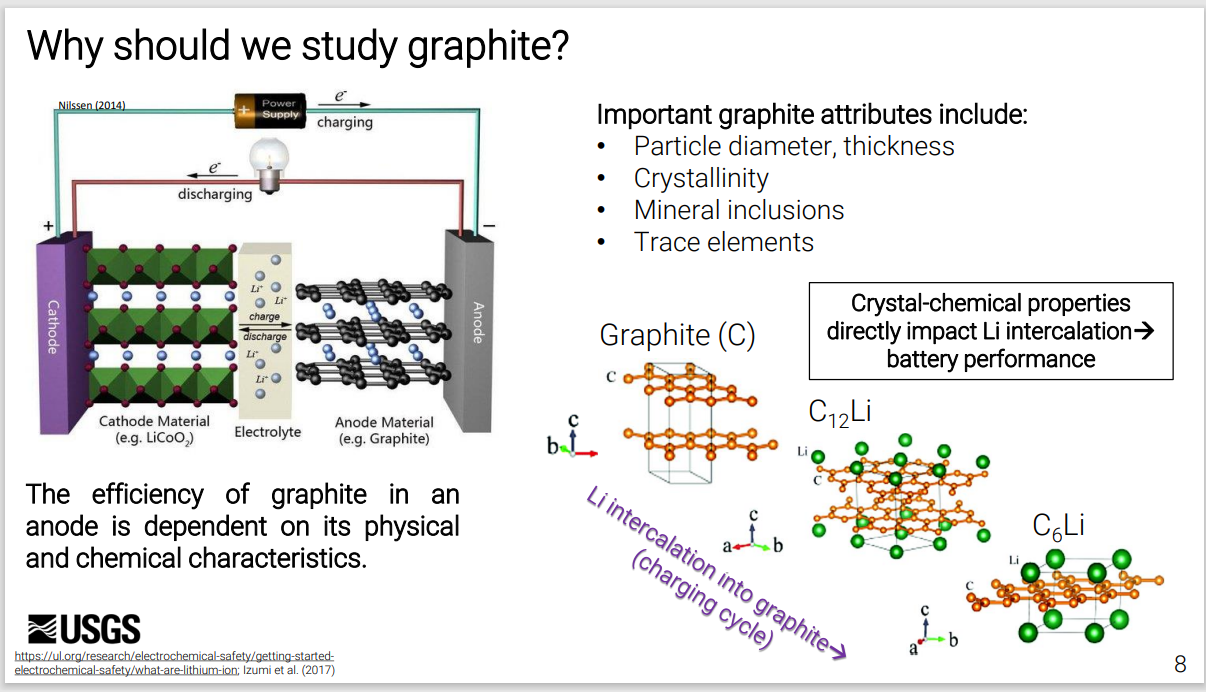
Rebecca explained that certain types of graphite work better than others for specific applications. So, knowing which type of graphite works best is basic and key to its efficient use for green energy. As shown below:
- Amorphous graphite is found in metamorphosed coals; with its lower purity, it is used for bricks to insulate furnaces.
- Flake graphite is found in metamorphosed sedimentary rocks; it has greater purity than amorphous granite and is used to support batteries.
- Vein graphite is coarse grained, has the lowest level of purity, and is used for electrical current carrying products.
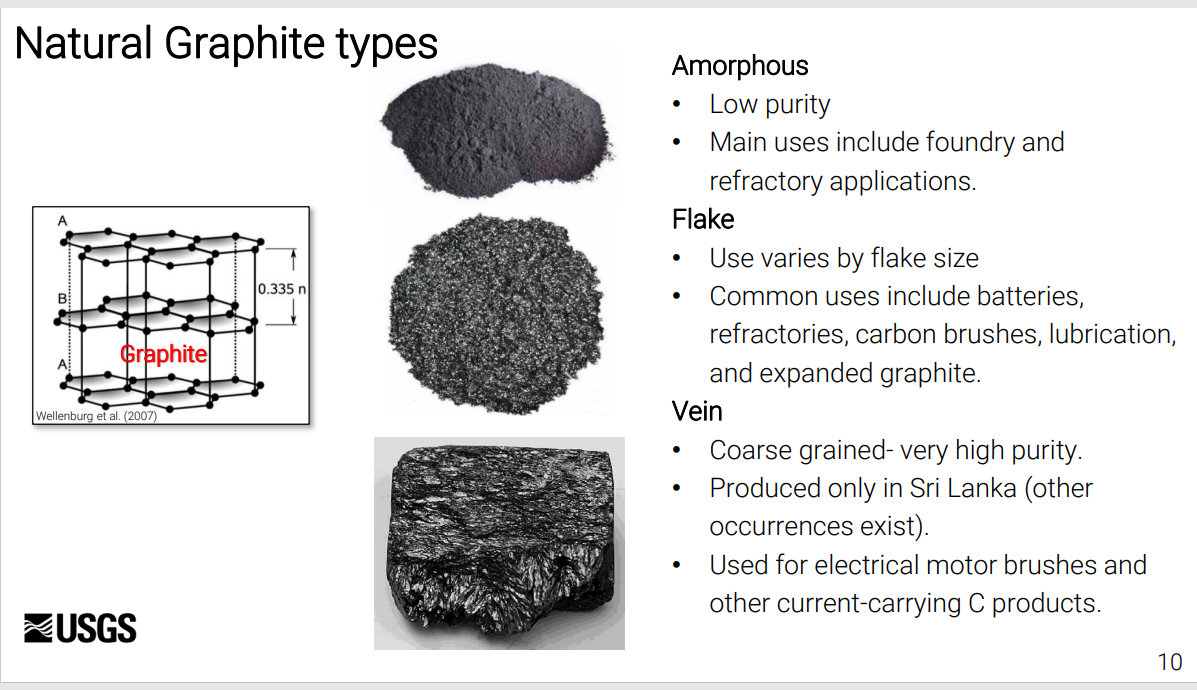
The physical characteristics of the graphite crystal structure affects its performance in batteries. For example, crystallinity and particle size are important attributes to consider. Technical research is needed to unpack how the physical and chemical characteristics of diverse graphite deposits are related to their geologic origin. What follows below shares some of the technical research findings that Rebecca and her USGS and other colleagues have discovered.
Transitioning from the above discussion’s introductory graphite characteristics to new research findings
With the above slides serving as background, Rebecca then transitioned to share three of her research projects with graphite.

To better understand graphite’s role in today’s changing energy landscape, Rebecca and her USGS team had to document the important variables describing the various forms of graphite as it is found across the globe. This “characterization” of graphite includes how its chemistry and diverse crystallinity vary across many deposits. The team discovered that the geologic formation in which they found the graphite also contributes to these properties. The USGS researchers used samples from across the globe. They were obtained from the USGS, the Smithsonian's Department of Mineral Sciences, and Michigan Tech’s Mineral Museum. Rebecca’s team used four high tech tools:
- scanning electron microscope (SEM) imaging,
- laser ablation inductively coupled plasma mass spectrometry (LA-ICP-MS),
- carbon isotopes, and
- Raman spectroscopy with X-ray diffraction.
“The purpose of the laser ablation (LA),’ Rebecca said, ‘was to help us find the trace elements.” By the combined use of the SEM and LA, the team could isolate tiny graphite samples to probe and identify. The researchers found that even in “clean” graphite, diverse trace elements were very common.
The USGS team found the variety of those trace elements within the diverse graphite samples was very wide. They found that specific combinations of trace elements were associated with certain source locations. Included in those many elements, for example, were trace amounts of uranium, beryllium, lead, and thorium. The team documented the average concentrations (elemental values) of those trace elements they found associated with each of the graphite locations.
The findings are important because trace elements influence the efficiency of the graphite for generating and storing electrical energy. Rebecca noted, for example, that iron detracts from the efficiency of graphite’s use in batteries.
The use of the Raman spectroscopy tool helps probe several characteristics of the crystal structure of carbonaceous material (CM). The increase in temperature generated by the crushing together of the subterranean rock formations transforms the original, less-orderly CM’s crystal structure into more efficient graphite structures which thereby support greater electron conductivity and lithium intercalation.
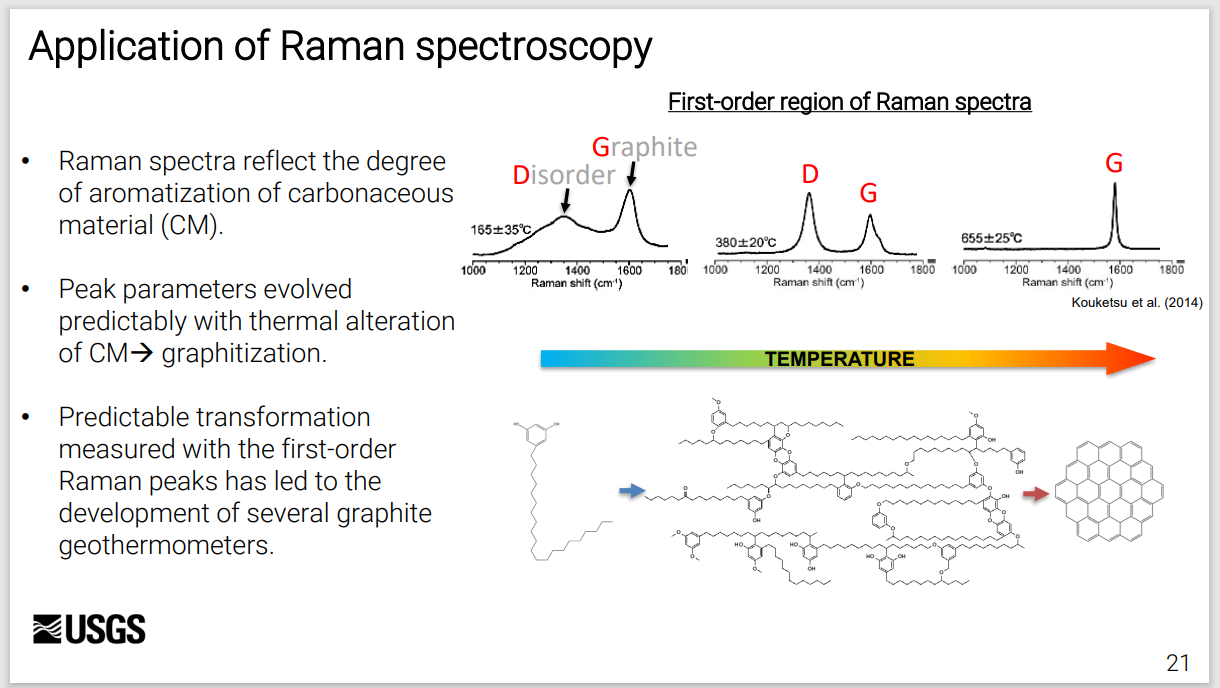
For example, Raman spectroscopy helps researchers identify how the stacking of the graphite crystal layers, when disordered with impurities and other crystal imperfections, changes its characteristics including its ability to support the flow of electrons. Greater order supports greater conductivity.
Rebecca reported on findings from additional high-tech tools working with carbon isotopes and X-ray diffraction to discover how additional variables vary between the nominally crystalline graphite samples.
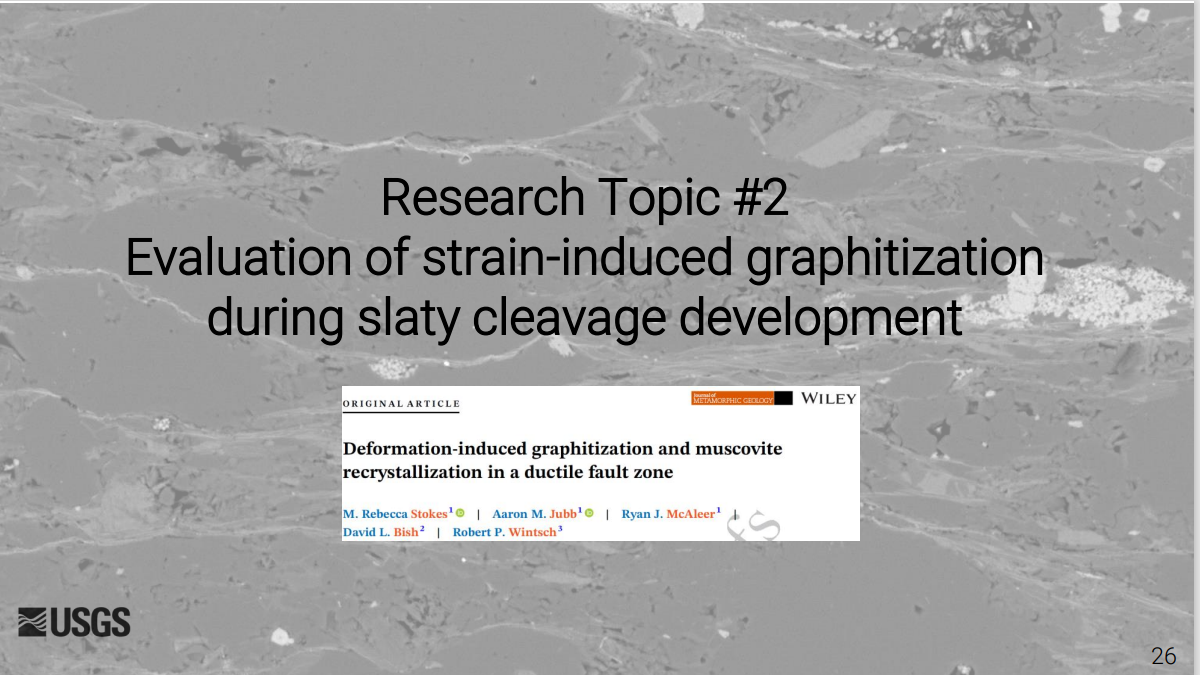
A second USGS research project evaluated how the geologic forces and temperatures at work during the formation of graphite affected the newly developing graphite’s crystal structure. This second team, different from the Global Graphite Project team described above, consisted of colleagues from the USGS, Indiana University, and Wesleyan University.
Simply put, their question was how geologic deformation factors influence the process of metamorphism, the transition of graphite crystallinity from earlier carbonaceous material.
The team’s objectives were to collect slate samples along a two kilometer transect crossing the Lishan fault in central Taiwan and then evaluate the effects of deformation on graphitization, as noted below.
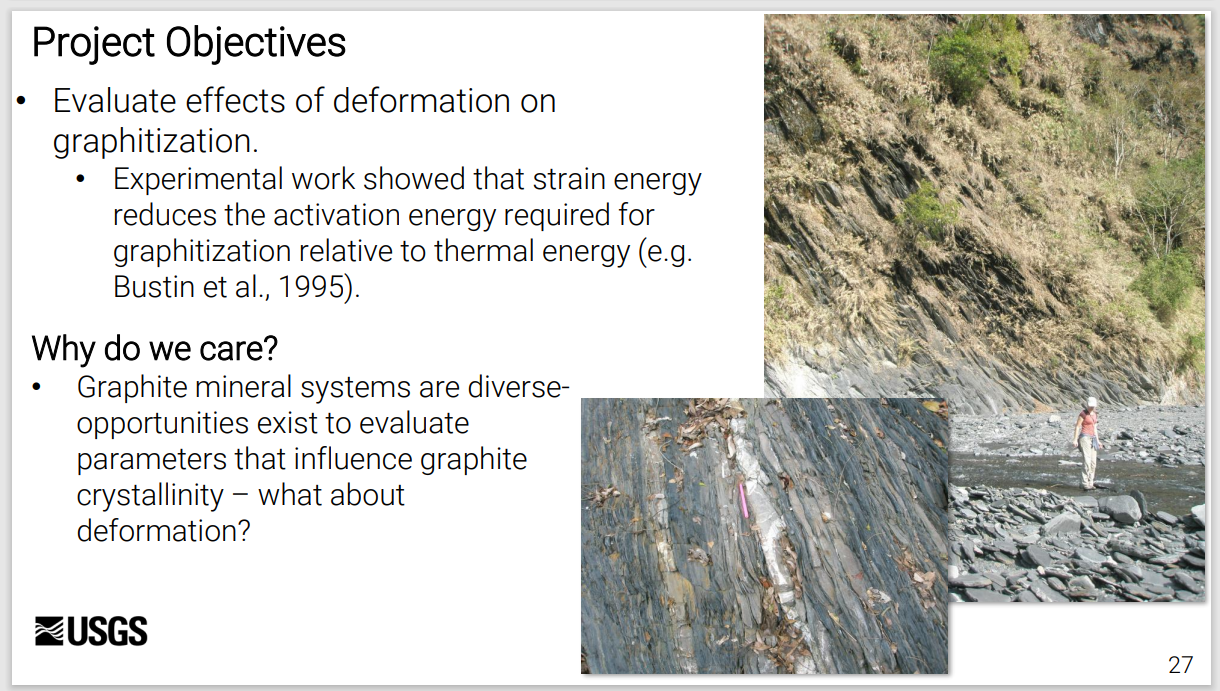
The team used high-tech tools to assess the role ductile deformation played in the natural graphitization that took place under the lower greenschist facies metamorphic conditions illustrated below.
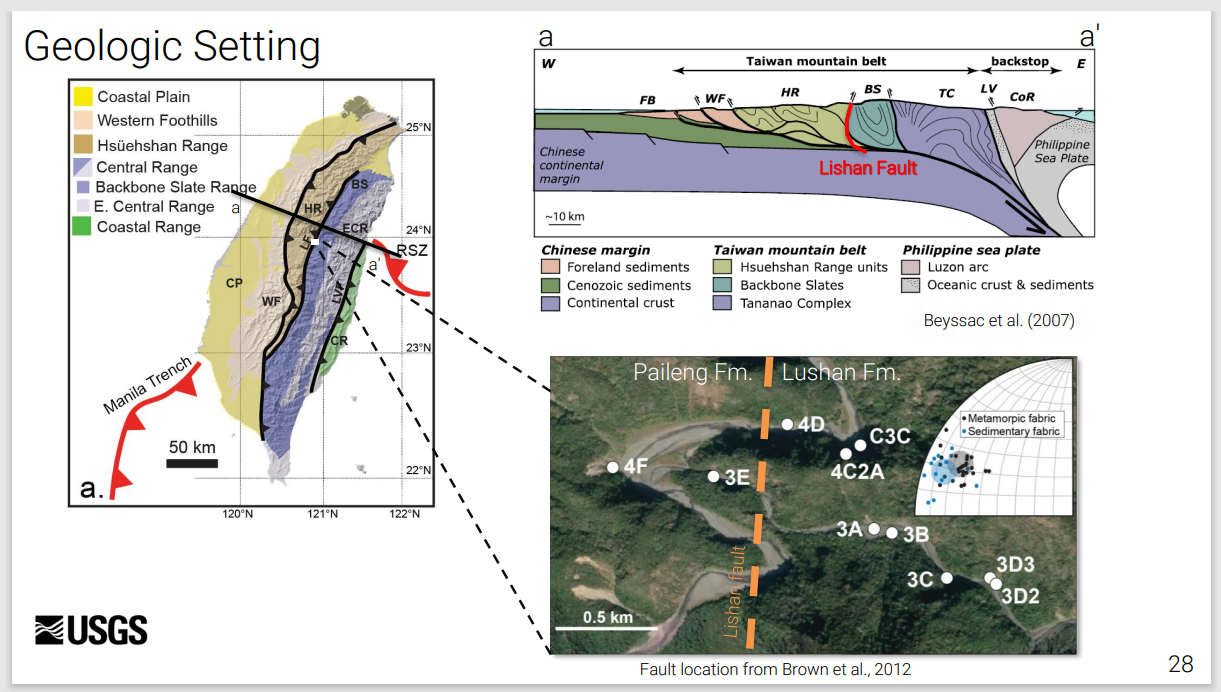
The team focused on the relationship between two variables, the different levels of strain evident in the samples, and the thermal conditions associated with those levels.
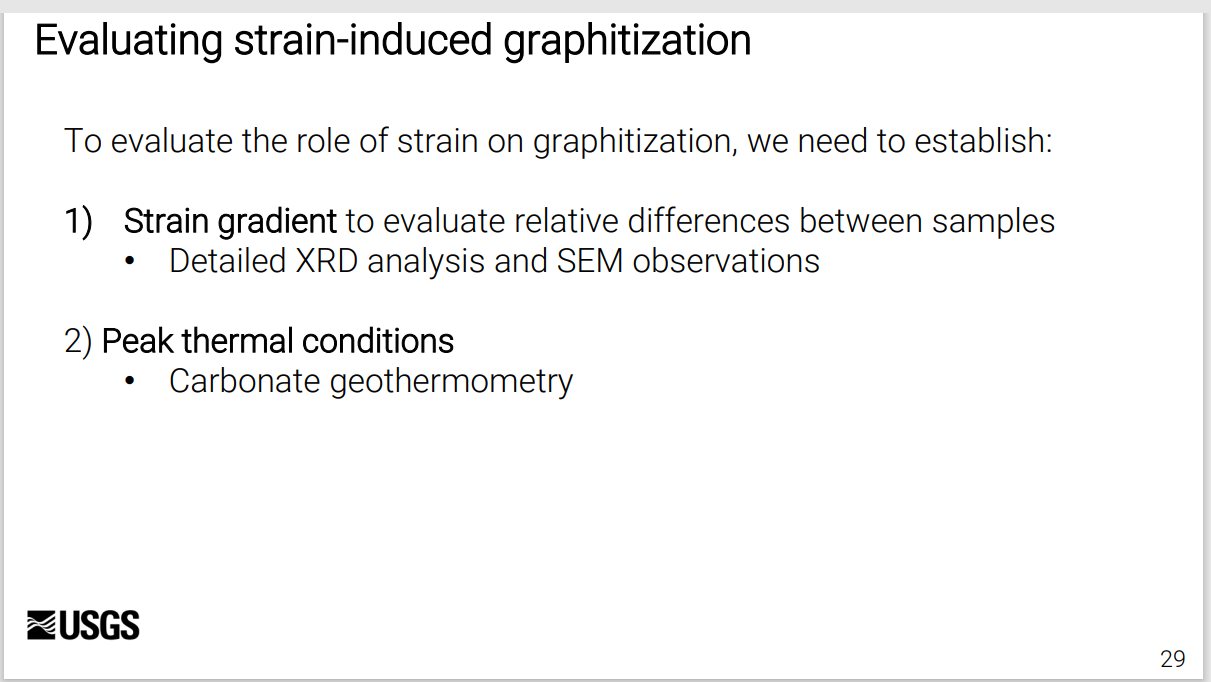
This study was published shortly after Rebecca's presentation and is open access to all interested parties. The article, "Deformation-induced graphitization and muscovite recrystallization in a ductile fault zone," was published in February 2024 in the Journal of Metamorphic Geology, Volume 42, Issue 2.
What she was able to share in her presentation was that sample analyses using the SEM and Raman Spectrographic tools confirmed three findings clearly illustrated in the slide below.
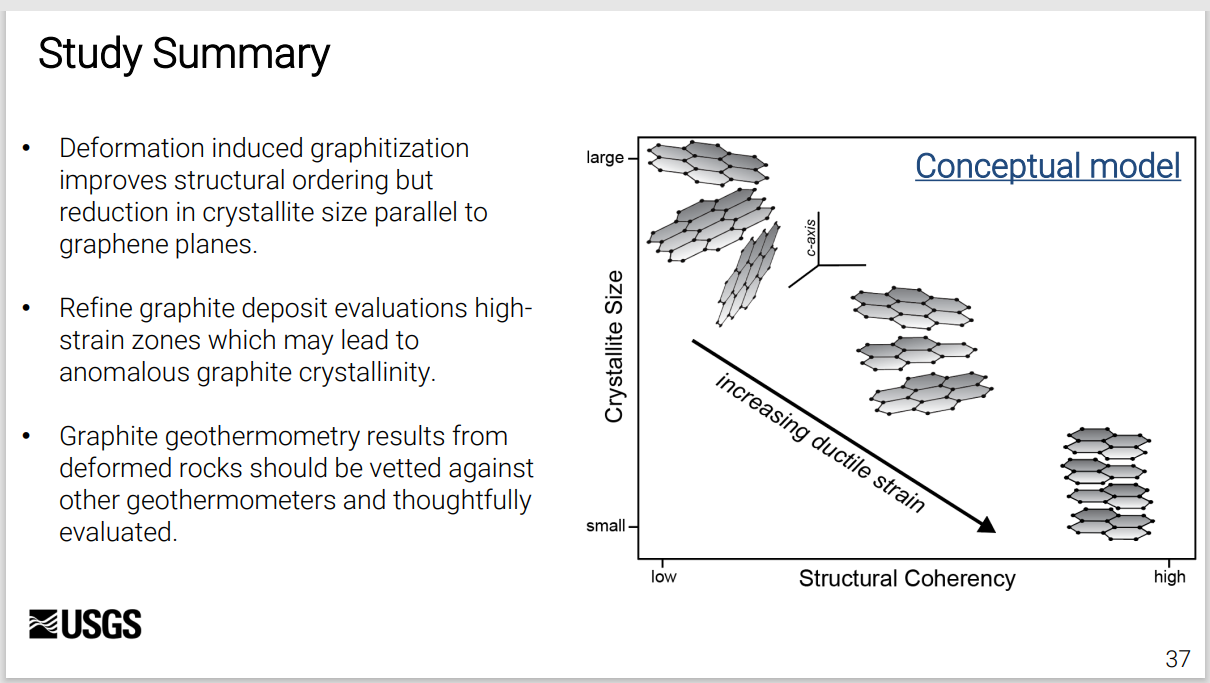
See the abstract and lengthy article’s link given above for more interesting results of the second study.
Research Topic #3
The objective of the third study was to assess and define the undiscovered graphite within the U.S., a process which, given the magnitude of the task, illustrated below, will be ongoing into the future.
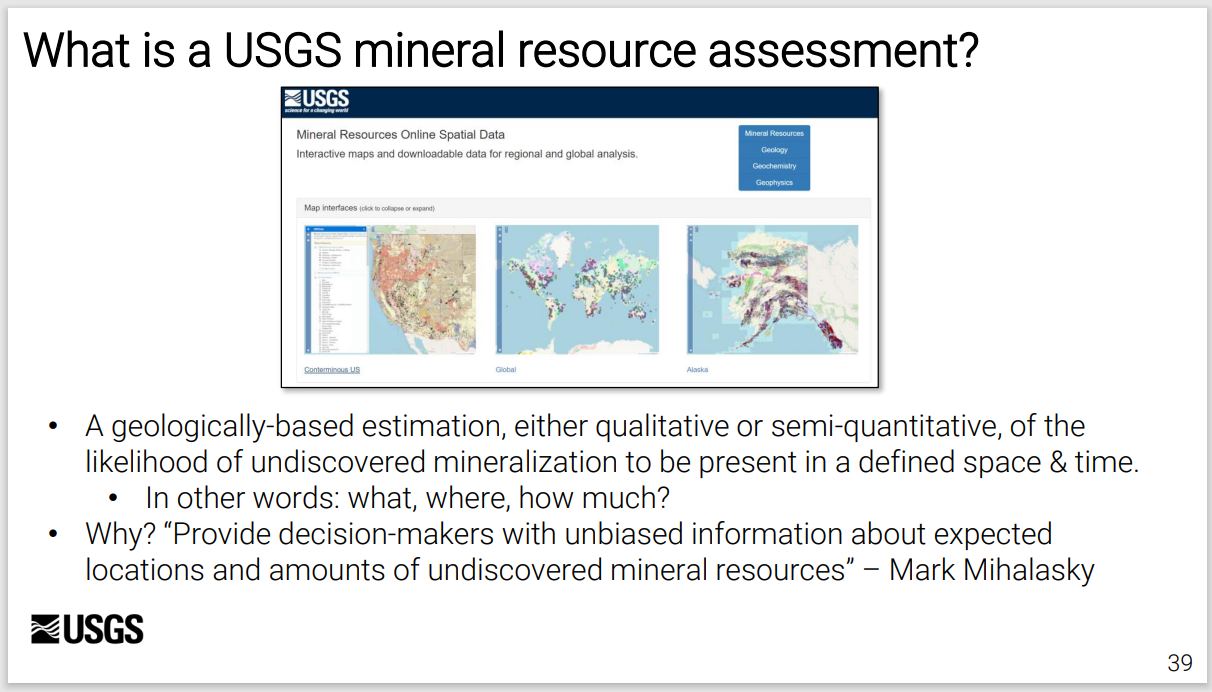
As an example of a USGS study’s product, Rebecca provided below a map of the potential tungsten skarn mineralization in the eastern slope of Alaska.

For the potential graphite mineralization, she shared multiple maps, including one showing an overview of the mainland U.S. and several showing graphite tracts in Montana. Future USGS studies will be providing additional estimates of graphite tracts throughout the nation.
The photos below are examples of graphite layers (darker matter) respectively in garnet gneiss, pegmatite, and skarn.
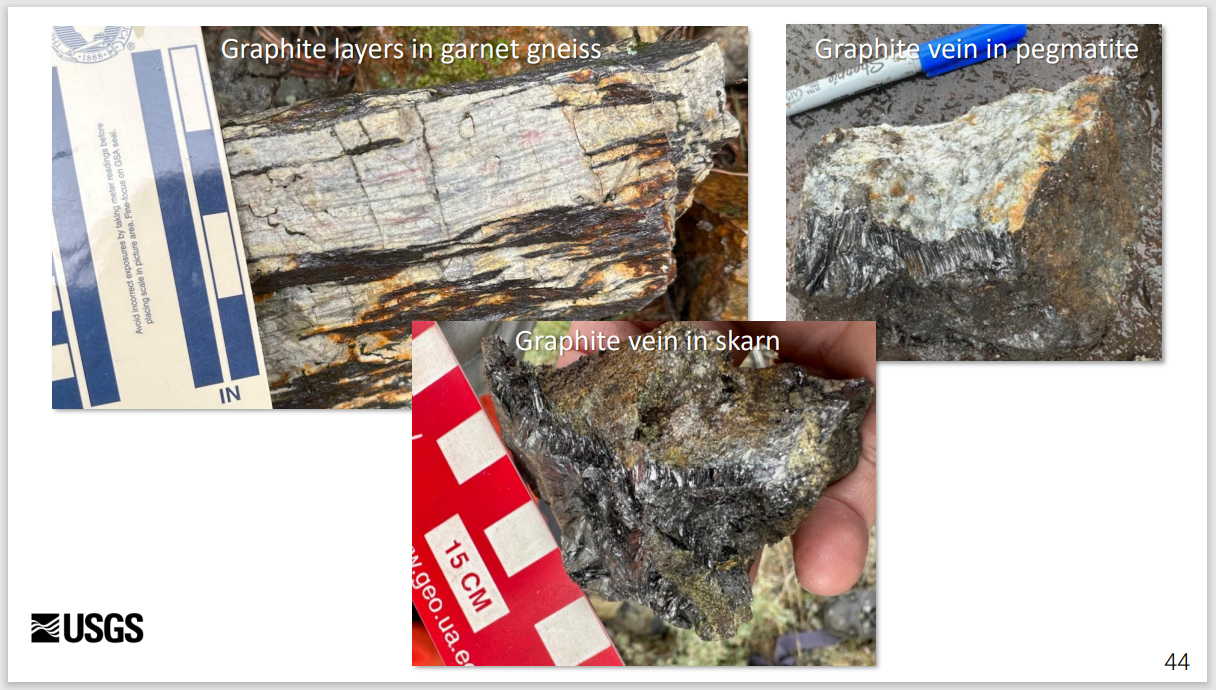
Rebecca summarized in the final slide below that this ongoing third and two earlier USGS projects contribute to how graphite research is central to U.S. successfully transitioning away from fossil fuel.
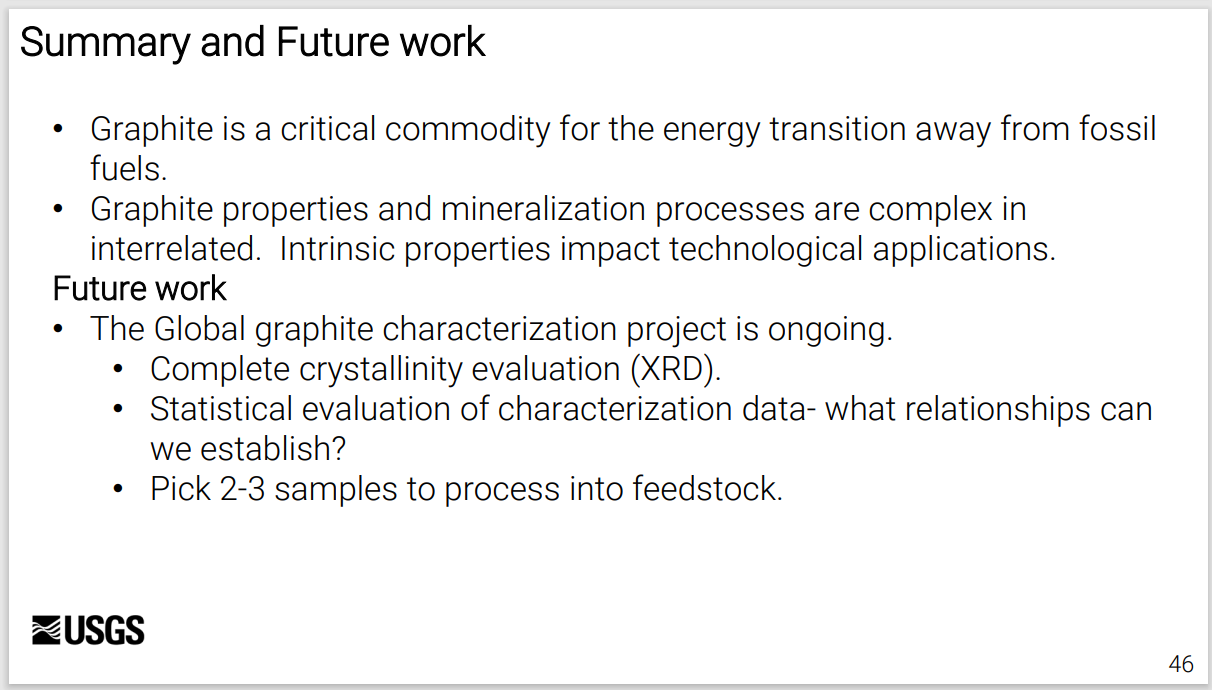
Readers wanting further information on graphite’s critical role can find it by clicking on the link below, which fully explains the second research topic, and by searching for Rebecca’s and other USGS publications. Here again is the website in the link provided above:
